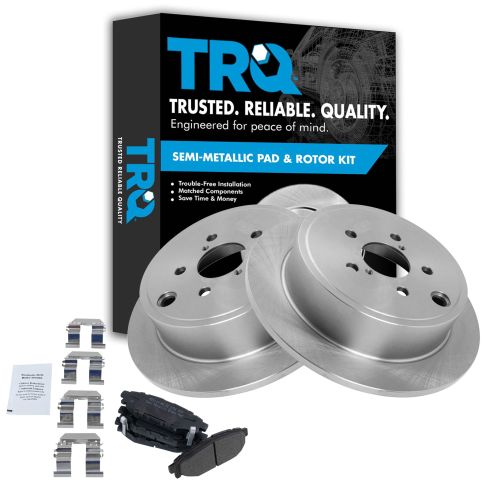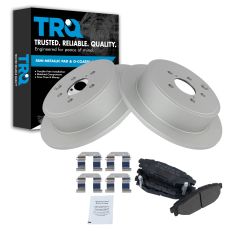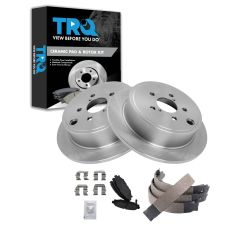1ABFS00527-Subaru Rear Semi-Metallic Brake Pad & Rotor Kit TRQ BKA10718

Replaces
2011 Subaru Legacy 3.6R Limited H4 2.5L Rear Semi-Metallic Brake Pad & Rotor Kit TRQ BKA10718

Product Reviews
Loading reviews
4.33/ 5.0
9
9 reviews
SO FAR,SO GOOD.
February 25, 2017
DISAPPOINTED THAT THE KIT DID NOT INCLUDE THE HARDWARE NECESSARY TO DO THE JOB, BUT THEY ARE PERFORMING WELL FOR NOW.
Fast shipping, fits perfect
May 2, 2020
We love 1A Auto and keep coming back. My other half is a mechanic, and he works on many different cars and 1A has always delivered with good parts in a timely fashion at decent prices.
2010 Subaru rear brakes
August 21, 2020
Easy and quick. Fit perfectly.
Rock Solid Fit
October 2, 2020
So far so good with these rotors and pads. I have put about 1,000 miles on them in my WRX without any noticeable noise or dust. The pads also fit really well in the stock calipers so I can safely say I will get the same brand for the front when those rotors and pads need to be replaced.
Overall A+ rating. Thank you 1A Auto!
Stop right now as you should.
March 8, 2022
These rotors fit perfectly. I could not be more pleased. Thanks A1Auto.
Pads Don't Last
August 22, 2022
I replaced the rear pads on my Forester at 91,500 miles and 16 months later at 106,000 miles there was nothing left of these pads except rusty dust causing me to fail my annual inspection. I would not recommend these.
October 31, 2022
The assembly was very good and support videos were excellent!!
All Aroung Great Experience!
January 28, 2023
Great price, fast shipping! Used TRQ products before and always had great results. What I love about 1A is how fast their shipping is, that is a big plus!
Subaru brakes
June 29, 2024
Long time viewer of your how to videos
First time customer
I watched your video of Len fixing Subaru brakes
I got mine put in just like Len told me
Great product and a great price and I got free shipping
PS. I would've entered your drawing, but I checked your terms and conditions, and it said the gift card drawing ended a year ago??
Customer Q&A
No questions have been asked about this item.
Subaru is a registered trademark of Fuji Heavy Industries Co., Ltd. 1A Auto is not affiliated with or sponsored by Subaru or Fuji Heavy Industries Co., Ltd.
See all trademarks.












